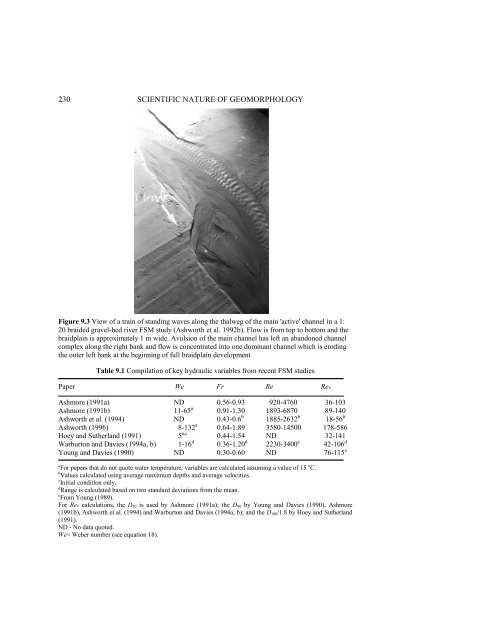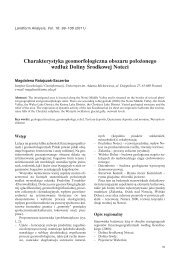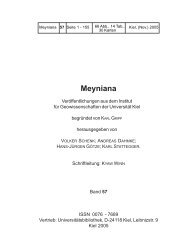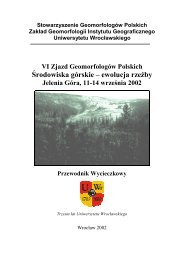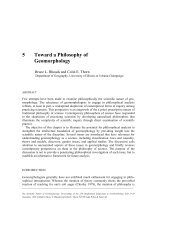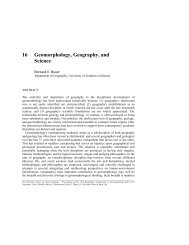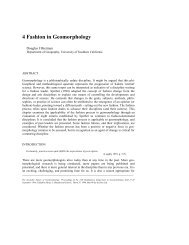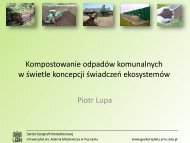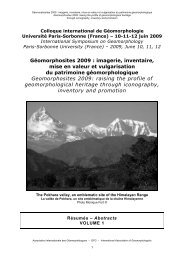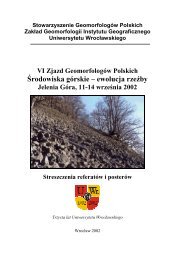Physical Modelling in Fluvial Geomorphology
Physical Modelling in Fluvial Geomorphology
Physical Modelling in Fluvial Geomorphology
Create successful ePaper yourself
Turn your PDF publications into a flip-book with our unique Google optimized e-Paper software.
230 SCIENTIFIC NATURE OF GEOMORPHOLOGY<br />
Figure 9.3 View of a tra<strong>in</strong> of stand<strong>in</strong>g waves along the thalweg of the ma<strong>in</strong> 'active' channel <strong>in</strong> a 1:<br />
20 braided gravel-bed river FSM study (Ashworth et al. 1992b). Flow is from top to bottom and the<br />
braidpla<strong>in</strong> is approximately 1 m wide. Avulsion of the ma<strong>in</strong> channel has left an abandoned channel<br />
complex along the right bank and flow is concentrated <strong>in</strong>to one dom<strong>in</strong>ant channel which is erod<strong>in</strong>g<br />
the outer left bank at the beg<strong>in</strong>n<strong>in</strong>g of full braidpla<strong>in</strong> development<br />
Table 9.1 Compilation of key hydraulic variables from recent FSM studies<br />
Paper We Fr Re Re *<br />
Ashmore (1991a) ND 0.56-0.93 920-4760 36-103<br />
Ashmore (1991b) 11-65 a<br />
0.91-1.30 1893-6870 89-140<br />
Ashworth et al. (1994) ND 0.43-0.6 b<br />
1885-2632 b<br />
18-56 b<br />
Ashworth (1996) 8-132 a<br />
0.64-1.89 3580-14500 178-586<br />
Hoey and Sutherland (1991) 5 a,c<br />
0.44-1.54 ND 32-141<br />
Warburton and Davies (1994a, b) 1-16 d<br />
0.36-1.20 d<br />
2230-3400 c<br />
42-106 d<br />
Young and Davies (1990) ND 0.30-0.60 ND 76-115 e<br />
a For papers that do not quote water temperature, variables are calculated assum<strong>in</strong>g a value of 15 o C.<br />
b Values calculated us<strong>in</strong>g average maximum depths and average velocities.<br />
c Initial condition only.<br />
d Range is calculated based on two standard deviations from the mean.<br />
e From Young (1989).<br />
For Re* calculations, the D50 is used by Ashmore (1991a); the D90 by Young and Davies (1990), Ashmore<br />
(1991b), Ashworth et al. (1994) and Warburton and Davies (1994a, b); and the D100/1.8 by Hoey and Sutherland<br />
(1991).<br />
ND - No data quoted.<br />
We= Weber number (see equation 18).


